Cowboy Polo
At the Circle L Ranch north of Bozeman the last weekend of July, they met in a good-sized arena marked off into five zones...men and women with mallets on horses, all going after the same big, rubber, playground ball.
It’s something of a grudge match, given that the dominant teams are from Missoula and Bozeman—state-university towns with a long history of rivalry in the more familiar sports of football and basketball. But there are also players from Billings and Great Falls and Butte on hand, in the stands or at their trailers tending to the stock. For you see, it’s tournament time for the Montana Cowboy Polo Association.
The game begins with a flip of a coin.
Similar in objective to field (or English) polo, the game is played with 10 people, one set of opponents in each of the five zones. Crossing the chalked zone lines with either mallet or hoof will cost you the ball and maybe yardage toward your opponent’s goal. The players know each other well. Some long ago toddled outside the arenas of action. Today, they test their skill and mettle...and that of their horses...in the big dusty square.
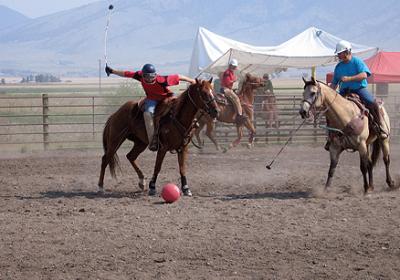
Tim McMillen plays for the Billings team. A regional representative for the plumbing fixtures company Moen, he can recall some 30 summers spent playing with Missoula’s “most valuable player” Doug Kopp.
“Even before we were old enough to play [the game],” says McMillen, the father of two, “we were always around each other. Our parents would say, ‘Go play with each other.’ Eventually, we ended up being Best Man at each other’s wedding.”
They also taught their wives to play. Dana (rhymes with Lana) Kopp began playing nine years ago when she met and married Doug. Now, the mother of a two-year-old girl and a helpmate in Doug’s horse and cattle business as well as a library technician at a local hospital, Dana says, “Nearly all the teams today have either a husband and wife, or father and son playing. When I started, there were only three or four women playing. Today, Missoula has four...[and] my sister plays for Bozeman.”
Joe Smith, the owner of a construction business who also rides for Bozeman, learned to play as a young boy. He anticipates his oldest son will be joining the team, soon as he can “hit the ball clear out of the zone with one swing” — a test used on Smith by his father. “Everyone uses this rule, more or less,” he says. “Kids even younger can go out and practice and learn, but until they get somewhat competitive they usually aren’t playing.”
Tournaments unfold in four 12-15 sets, called chukkers. In between each chukker, there’s a rest period for players and horses and the teams switch end zones. The center zone is the largest (60 feet in length) and where the most running occurs. Dana generally plays in the middle zones, explaining that there are others on the team, such as her husband, who are more skilled at guarding the goal zone and more capable of sending the ball back into play.
“You’d think it would be easy to hit that big ball. It’s a big playground ball,” she says, “but it takes a lot of arm strength. Guys have all sorts of strength to hit the ball, but you’re also riding and guiding your horse, stopping and starting. There are so many different levels of learning. Sometimes, it takes a year or more to start improving and to really play competitively, to see the strategy in each zone. It all depends on how experienced the horse and rider are.”
During tournaments, Dana typically rides her father-in-law’s horse, Belle. Smaller than most on the field, the animal works with her to obtain the best positioning inside their 50’ x 120’ zone and to get Dana a whack at that amazingly fast, ever bouncing ball.
“Horses learn where the ball should and shouldn’t go,” she says. “Horses that play in the guard spot a lot have an uncanny ability to have their feet and legs just perfectly positioned to block shots. Forward (scoring end) horses know that the ball should be going between the cones, so they seem to be able to help kick it through. The running horses, in the middle zones, have been known to pick up their front feet while running to let their rider get a clear forehand shot. Some horses love to run. Some love to push. And some are better at it than others, just like people. It isn’t just sitting on the horse and hitting a ball.”
“It takes a certain type of person to play the game,” says McMillen. “Usually, it’s a competitive person who doesn’t care how they look to other people. They just enjoy the horse, the people, the camaraderie, the whole group.”
Smith agrees that “it’s the people who truly make you want to come back and make you want to be around them again for the next couple of weekends,” but he says the game also “gives me a rush like nothing else on a horse will do. It’s the speed and the physical and mental nature of the game. [And] I think it’s the competition with your horse. In the past 20 years, I’ve had six to eight different horses and I’m always bringing in one or two younger ones to learn the game. I get such a personal rush when I’m out there with my horse doing well against my opponent.”
Originated in Florida as Palmetto Polo in 1952, because the mallet handles were made out of palm, Cowboy Polo is called the “average man’s” sport because players can only ride two horses during a game, unlike traditional polo, where a string of thoroughbreds is a must. Most animals in the Cowboy Polo circuit are, in fact, quarter horses that have been around a while. McMillen’s primary ride is a 19-year-old gelding named Yankee.
“I’ve played against horses that are 22 and 24 years old,” he says. “That’s getting up there, but horses understand the game. You can watch a horse that’s played a while and they know what’s going on and can help you out.”
When Smith plays, he chooses between Magic, 12, and Louie, 9, based on his mood or the day’s competition. “Each horse is different,” he explains further. “Magic, when she was younger, was my running horse. Now she’s learned it’s easier for her just to push.”
Good Cowboy Polo horses are usually created, rather than purchased ready to ride. Players also agree that just about any horse with a steady disposition can be taught the game, but there’s usually a fear factor on the part of the owner.
“When people watch [us play], we often hear them say, “I wouldn’t want to hurt my horse,” says McMillen. “That tells me what they’re really saying is that they are afraid to try. I’ve been playing for years and seen a lot of games. More horses are hurt every year hunting or roping than playing polo. We treat our horses really well. Safety is one of our biggest concerns, for riders and horses, and we take precautions to minimize that risk.”
These precautions include two riding referees, two goal spotters, and some 32 rules of play, including 11 concerning such personal fouls as “reaching across an opposing player’s horse,” or “riding into and hitting an opposing player’s horse in front or back of the saddle with his/her horse’s front quarters, at greater than a 45-degree angle.” Since becoming known as Cowboy Polo in 1959, the Association has also adopted sport regulations and bylaws. Tournament play also includes two timekeepers, a scorekeeper, and an announcer to call the play-by-play.
“Cowboy polo...is designed so you don’t get to going too fast,” says McMillen. “With traditional polo, you can move fast across the arena to get the ball. In cowboy polo, there’s a lot more stopping and slowing. It’s a safe sport not overdone with safety rules.”
Dana says easily, “I’ve been hit in the head [by a mallet] in full swing. That’s why we wear helmets with facemasks and leg pads and our horses wear boots and some get padded breast collars. You can easily get hit. But I figure if you don’t leave with any bruises, you’re not doing any favors for your team.”
A generation ago, there were some 30 Cowboy Polo teams in Montana. Today, there are barely five communities that field teams. The Missoula, Great Falls and Billings clubs are affiliated with the local sheriff’s posse, although members admit that in this era of ATVs and helicopters, there’s little call for a mounted search and rescue. Instead, the clubs make themselves available for other civic & ceremonial duties. In Yellowstone County, the team serves as a security detail for presidential visits, while the Gallatin Club and Great Falls team ride in local parades. (Note: the Montana Polo Club in Whitefish offers a variety of Cowboy Polo classes, but does not participate in the Montana circuit.)
The Cowboy Polo USA website [www.cowboypolousa.com] explains that the national Association was formed primarily to bring attention to the sport, which exists in Montana, Colorado, Texas and Australia.
“We’ve seen our numbers dwindle over the years,” admits McMillen, who’s served as club captain as well as state Association president, “but we’re no different than any other organization, like the Elks or the Shriners. Everyone is having a hard time keeping members, but they all try to help out the new members. Our main goal is we want to help the new players better their ability.”
Smith praises his teammates for bringing in new blood to the Bozeman team, which today has enough players to field two teams and is also playing field polo with English saddles.
“Rob Brooks owns a leather shop in town,” he says, “and he got excited about polo five or six years ago. Rob’s a likeable person and so all his friends came and played. About 20 or 30 people tried the game and we kept four or five of them.”
Dana says the Missoula team also actively encourages new players, but admits, “Sometimes, we find that ego can be a real problem. Many people don’t want play if they can’t be good immediately. Admitting that they might not ride well enough to play, or the possibility of falling off, is too hard for some people. We do have a rule, though, that if you fall off, or are bucked off your horse, you buy a case of beer. If you took a poll, probably most of us have ‘bought beer’ at some point or another, so it isn’t like the newest player would be the first.”
More importantly, Dana says, the game is about having fun. With a Round Robin approach to each tournament, the coaches make sure everyone plays, and Saturday evening is reserved for a huge potluck dinner. Spectators are welcome, but even though the chukkers are played by 1 pm, bleachers and shade are limited and hotels can be 10-15 miles away. The final gathering, the Field Days Competition, occurs over Labor Day Weekend. Featuring Cowboy Polo and relay-style games meant to emphasize horsemanship and team spirit, the winning team gets a traveling trophy and opponents get to name the state’s Most Valuable Player, Most Valuable Horse and other awards. Players are awarded riding tack instead of ribbons.
Based on the results of the tournament at the Circle L, there are no clear-cut winners heading into the final game of 2006. Bozeman, Missoula and Great Falls have each won two games. So it’s a three-way tie, which is just fine for the folks who practice two and three times a week and live to play again another day.

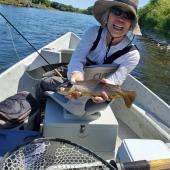

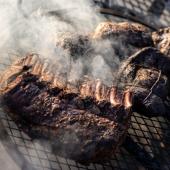
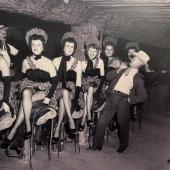
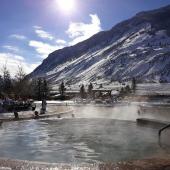


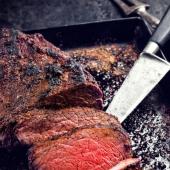
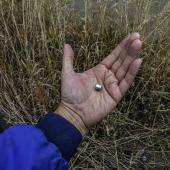
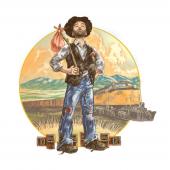

Leave a Comment Here